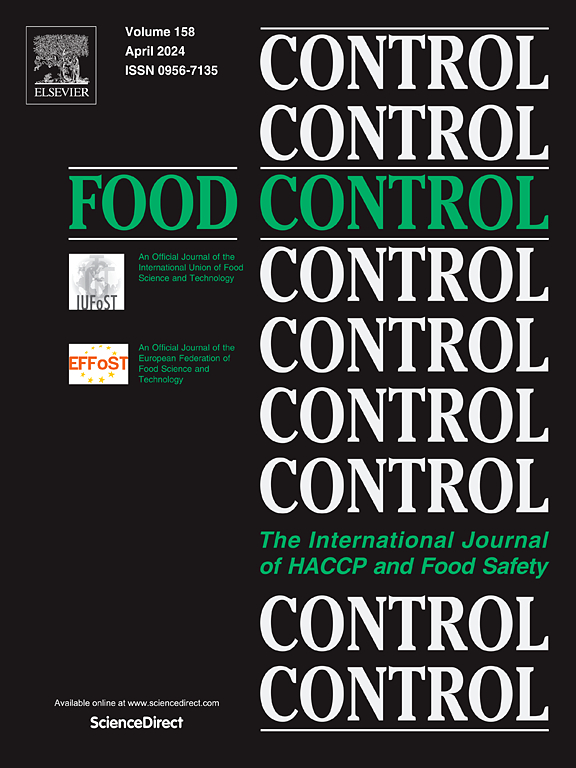Development of near-infrared hyperspectral-based smart interface for glutinous rice quality detection
IF 5.6
1区 农林科学
Q1 FOOD SCIENCE & TECHNOLOGY
引用次数: 0
Abstract
Hyperspectral imaging (HSI) technology combined with chemometrics has offered a profound advancement in rice quality assessment. With the advent of this technology, glutinous rice quality such as moisture content, colour indices, protein, fat, and ash content are swiftly and accurately predicted without destroying the grains. The technology eliminates the laborious, time consuming, chemically demanding and expensive traditional method of grain quality determination. However, the complexity of HSI technology makes it more prominent in the research field because it requires high technical skills. Therefore, the development of a smart user interface (GUI) called HyperspecGlu in this study aids the rapid and nondestructive application of HSI data coupled with chemometrics for the determination of glutinous rice quality which includes colour change, golden index, moisture, protein, fat and ash content. The tool simplifies the HSI data processing and glutinous rice quality prediction, featuring data upload, preprocessing, model execution and result visualization through a click-and-run button. Employing three-stage processing techniques which include Savitzky-Golay first derivative techniques for spectral correction, redundant wavelength removal using variable importance space shrinkage approach and predictive model development gave a good prediction accuracy, which makes the HyperspecGlu reliable. Therefore, the HyperspecGlu toolbox is capable of swiftly detecting glutinous rice quality with high accuracy based on the HSI combined with chemometrics and the GUI makes the process available and accessible for users with little or no programming knowledge.
求助全文
约1分钟内获得全文
求助全文
来源期刊

Food Control
工程技术-食品科技
CiteScore
12.20
自引率
6.70%
发文量
758
审稿时长
33 days
期刊介绍:
Food Control is an international journal that provides essential information for those involved in food safety and process control.
Food Control covers the below areas that relate to food process control or to food safety of human foods:
• Microbial food safety and antimicrobial systems
• Mycotoxins
• Hazard analysis, HACCP and food safety objectives
• Risk assessment, including microbial and chemical hazards
• Quality assurance
• Good manufacturing practices
• Food process systems design and control
• Food Packaging technology and materials in contact with foods
• Rapid methods of analysis and detection, including sensor technology
• Codes of practice, legislation and international harmonization
• Consumer issues
• Education, training and research needs.
The scope of Food Control is comprehensive and includes original research papers, authoritative reviews, short communications, comment articles that report on new developments in food control, and position papers.
 求助内容:
求助内容: 应助结果提醒方式:
应助结果提醒方式:


